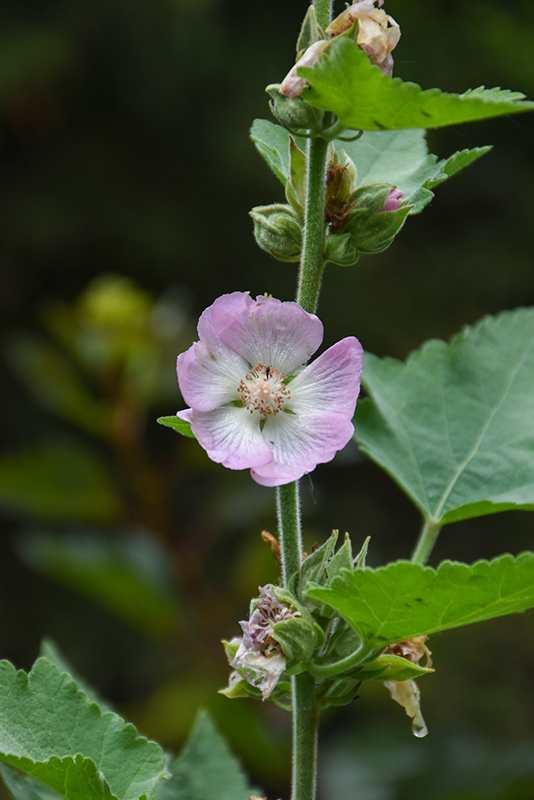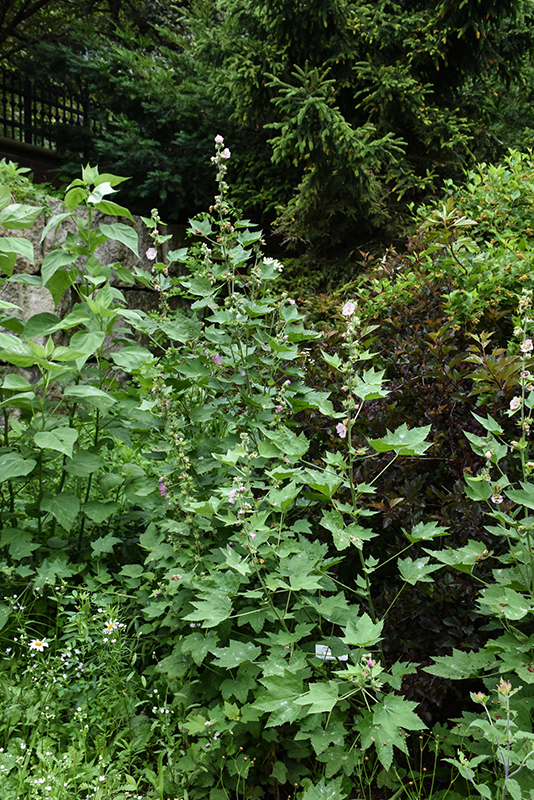Plant Height: 4 feet
Flower Height: 6 feet
Spacing: 24 inches
Sunlight:
![]()
![]()
Hardiness Zone: 5
Description:
A rare, wild native hollyhock with a clump forming, erect habit; features tall stems of soft pink to bluish-pink flowers in early summer, over attractive, maple-like lobed leaves; easy to grow and tolerant of hot and humid conditions
Ornamental Features
Kankakee Mallow features bold spikes of shell pink round flowers with lilac purple overtones, creamy white eyes and gold anthers rising above the foliage from late spring to early summer. The flowers are excellent for cutting. Its large serrated lobed leaves remain emerald green in color throughout the season.
Landscape Attributes
Kankakee Mallow is an herbaceous perennial with an upright spreading habit of growth. Its relatively coarse texture can be used to stand it apart from other garden plants with finer foliage.
This is a relatively low maintenance plant, and is best cleaned up in early spring before it resumes active growth for the season. It is a good choice for attracting bees, butterflies and hummingbirds to your yard, but is not particularly attractive to deer who tend to leave it alone in favor of tastier treats. Gardeners should be aware of the following characteristic(s) that may warrant special consideration;
- Self-Seeding
Kankakee Mallow is recommended for the following landscape applications;
- Vertical Accent
- Mass Planting
- General Garden Use
- Groundcover
- Naturalizing And Woodland Gardens
Planting & Growing
Kankakee Mallow will grow to be about 4 feet tall at maturity extending to 6 feet tall with the flowers, with a spread of 30 inches. When grown in masses or used as a bedding plant, individual plants should be spaced approximately 24 inches apart. It tends to be leggy, with a typical clearance of 1 foot from the ground, and should be underplanted with lower-growing perennials. The flower stalks can be weak and so it may require staking in exposed sites or excessively rich soils. It grows at a fast rate, and under ideal conditions can be expected to live for approximately 4 years. As an herbaceous perennial, this plant will usually die back to the crown each winter, and will regrow from the base each spring. Be careful not to disturb the crown in late winter when it may not be readily seen!
This plant does best in full sun to partial shade. It prefers to grow in average to moist conditions, and shouldn't be allowed to dry out. It may require supplemental watering during periods of drought or extended heat. This plant does not require much in the way of fertilizing once established. It is not particular as to soil type or pH. It is highly tolerant of urban pollution and will even thrive in inner city environments. This species is native to parts of North America.


